ETHIOFENCARB
- CAS NO.:29973-13-5
- Empirical Formula: C11H15NO2S
- Molecular Weight: 225.31
- MDL number: MFCD00055463
- EINECS: 249-981-9
- SAFETY DATA SHEET (SDS)
- Update Date: 2024-12-18 13:37:16
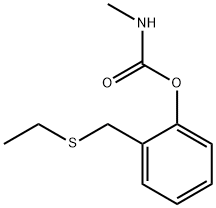
What is ETHIOFENCARB?
Description
Ethiofencarb, α-ethylthio o-tolyl methylcarbamate (IUPAC), C11H25N02S, MW 225.3, mp 33.4 ?C, forms colorless crystals that are moderately soluble in water, are fairly soluble in hexane, and are readily soluble in dichloromethane, isopropanol, and toluene.
The Uses of ETHIOFENCARB
Ethiofencarb is a kind of Systemic insecticide ,used to control aphids on fruit crops.
The Uses of ETHIOFENCARB
Ethiofencarb is a systemic insecticide with contact and stomach action. It is used to control aphids on fruit, vegetables, ornamentals and sugar beet.
Preparation
Ethiofencarb is produced by reaction of 2-chloromethyl phenol with sodium ethylmercaptide to form 2-ethylthio methylphenol, which in turn is reacted with methylisocyanate.
Definition
ChEBI: Ethiofencarb is a carbamate ester. It has a role as a carbamate insecticide, an EC 3.1.1.7 (acetylcholinesterase) inhibitor and an agrochemical. It is functionally related to a methylcarbamic acid and a 2-[(ethylsulfanyl)methyl]phenol.
Environmental Fate
Plant. Degrades in plants to the sulfone and sulfoxide (Hartley and Kidd, 1987).
Metabolic pathway
Ethiofencarb is metabolised by rapid oxidation at sulfur, hydrolysis of the carbamate group to give phenols, hydroxylation of the N-methyl moiety and conjugation.
Degradation
Ethiofencarb is stable in neutral and acidic but is hydrolysed under basic
conditions. DT50 values at pH 7 and 11.4 (37 °C) were 450 hours and
5 minutes, respectively. The kinetics of hydrolysis of ethiofencarb in
pure water and in aqueous solutions at pH 2,6,9,12 and at temperatures
in the range 4-50°C were studied. No acid hydrolysis was observed.
Ethiofencarb was rapidly hydrolysed at pH 9 and 12. Ethiofencarb in
pure water at room temperature reached an equilibrium with 80%
remaining undegraded (Sanz-Asensio et al., 1997).
Photodegradation of aqueous solutions in sunlight is rapid (PM). The
oxidative photodegradation of ethofencarb was studied in aqueous
acetonitrile using anthraquinone to mimic natural photosensitisers. Solutions
were irradiated with a Hg lamp (400 W) for 48 minutes. The
emission spectrum of the lamp was not described. Reaction products
were identified by GC-MS methods. The main products were 2-
hydroxybenzaldehyde (2) and 3-methylbenzo[e-1,3]oxazine-2,4-dione(3)
(see Scheme 1). Products resulted from photocleavage of the CH,-S bond
and/or the C-O bond followed by hydrogen atom abstraction and
photo-oxidation. An electron-acceptor photosensitiser may increase rates
of photodegradation (Galadi and Julliard, 1996). Solutions of ethiofencarb
in cyclohexane, cyclohexene or isopropanol were irradiated with a high
pressure Hg lamp (cut-off filter <280 nm) or natural sunlight (Germany,
May-July). Analysis was by HPLC with diode-array detection, NMR, IR
and MS. Half-lives of photodegradation were in the range 20 minutes
to more than 20 hours. The predominant reaction (Scheme 1) was
photo-oxidation of ethiofencarb to its sulfoxide (4). The cyclic dione (3)
was a product of oxidation at the benzylic position. Ethiofencarb was
photo-oxidised in cyclohexane to the sulfoxide (4) and the sulfone (5) and
their corresponding phenols (8 and 9), the latter being a minor product.
Subsequently the cyclised dione (3) was formed. In isopropanol,
reaction with solvent gave addition products (6 and 7) and an unusual
bis-diethylthio compound (10) (Kopf and Schwack, 1995).
Properties of ETHIOFENCARB
| Melting point: | 43-45℃ |
| Boiling point: | 327.3±34.0 °C(Predicted) |
| Density | 1.231 g/cm3 (20 ºC) |
| vapor pressure | 4.5 x 10-4 Pa (20 °C) |
| refractive index | 1.4790 (estimate) |
| storage temp. | APPROX 4°C
|
| form | neat |
| Water Solubility | 1800 mg l-1 (20 °C) |
| pka | 12.09±0.46(Predicted) |
| BRN | 2973224 |
| CAS DataBase Reference | 29973-13-5(CAS DataBase Reference) |
| EPA Substance Registry System | Ethiofencarb (29973-13-5) |
Safety information for ETHIOFENCARB
| Signal word | Warning |
| Pictogram(s) |
 Exclamation Mark Irritant GHS07  Environment GHS09 |
| GHS Hazard Statements |
H302:Acute toxicity,oral H410:Hazardous to the aquatic environment, long-term hazard |
| Precautionary Statement Codes |
P264:Wash hands thoroughly after handling. P264:Wash skin thouroughly after handling. P270:Do not eat, drink or smoke when using this product. P273:Avoid release to the environment. P391:Collect spillage. Hazardous to the aquatic environment P301+P312:IF SWALLOWED: call a POISON CENTER or doctor/physician IF you feel unwell. P501:Dispose of contents/container to..… |
Computed Descriptors for ETHIOFENCARB
New Products
Tert-butyl bis(2-chloroethyl)carbamate (S)-3-Aminobutanenitrile hydrochloride N-Boc-D-alaninol N-BOC-D/L-ALANINOL 3-(2,4-Dimethoxybenzyl)dihydropyrimidine-2,4(1H,3H)-dione 7-Bromo-1H-indazole N-octanoyl benzotriazole 3,4-Dibenzyloxybenzaldehyde 4-Hydrazinobenzoic acid Electrolytic Iron Powder Fmoc-Val-Cit-PAB 1,1’-CARBONYLDIIMIDAZOLE R-2-BENZYLOXY PROPIONIC ACID 4-HYDROXY BENZYL ALCOHOL 1,1’-CARBONYLDI (1,2-4 TRIAZOLE) S-2-CHLORO PROPIONIC ACID (2-Hydroxyphenyl)acetonitrile 4-Bromopyrazole 5-BROMO-2CYANO PYRIDINE 5,6-Dimethoxyindanone 5-broMo-2-chloro-N-cyclopentylpyriMidin-4-aMine 1-(4-Methylphenylsulfonyl)-1H-1,2,3-benzotriazole 1-(2-Chlorobenzyl)-4-nitro-1H-pyrazole 1-(2-Nitrophenyl)-4-phenylpiperazineRelated products of tetrahydrofuran
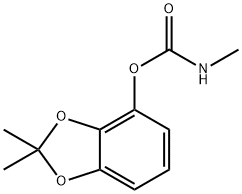
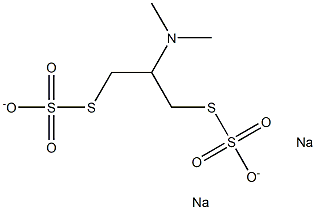
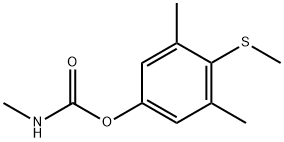
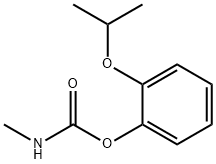

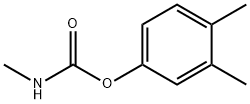
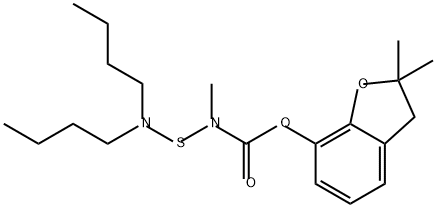

You may like
-
 Ethiofencarb CAS 29973-13-5View Details
Ethiofencarb CAS 29973-13-5View Details
29973-13-5 -
 55441-95-7 2 2-BIS(2-HYDROXYETHOXY)-1 1-BINAPHTHYL 99%View Details
55441-95-7 2 2-BIS(2-HYDROXYETHOXY)-1 1-BINAPHTHYL 99%View Details
55441-95-7 -
 Ste-Glu-AEEA-AEEA-OSUView Details
Ste-Glu-AEEA-AEEA-OSUView Details
1169630-40-3 -
 1446013-08-6 Fmoc-His-Aib-OH TFA 98%View Details
1446013-08-6 Fmoc-His-Aib-OH TFA 98%View Details
1446013-08-6 -
 127464-43-1 99%View Details
127464-43-1 99%View Details
127464-43-1 -
 Chloro Uracil 99%View Details
Chloro Uracil 99%View Details
1820-81-1 -
 2-ETHYLPYRIDINE 100-71-0 99%View Details
2-ETHYLPYRIDINE 100-71-0 99%View Details
100-71-0 -
 13162-05-5 99%View Details
13162-05-5 99%View Details
13162-05-5